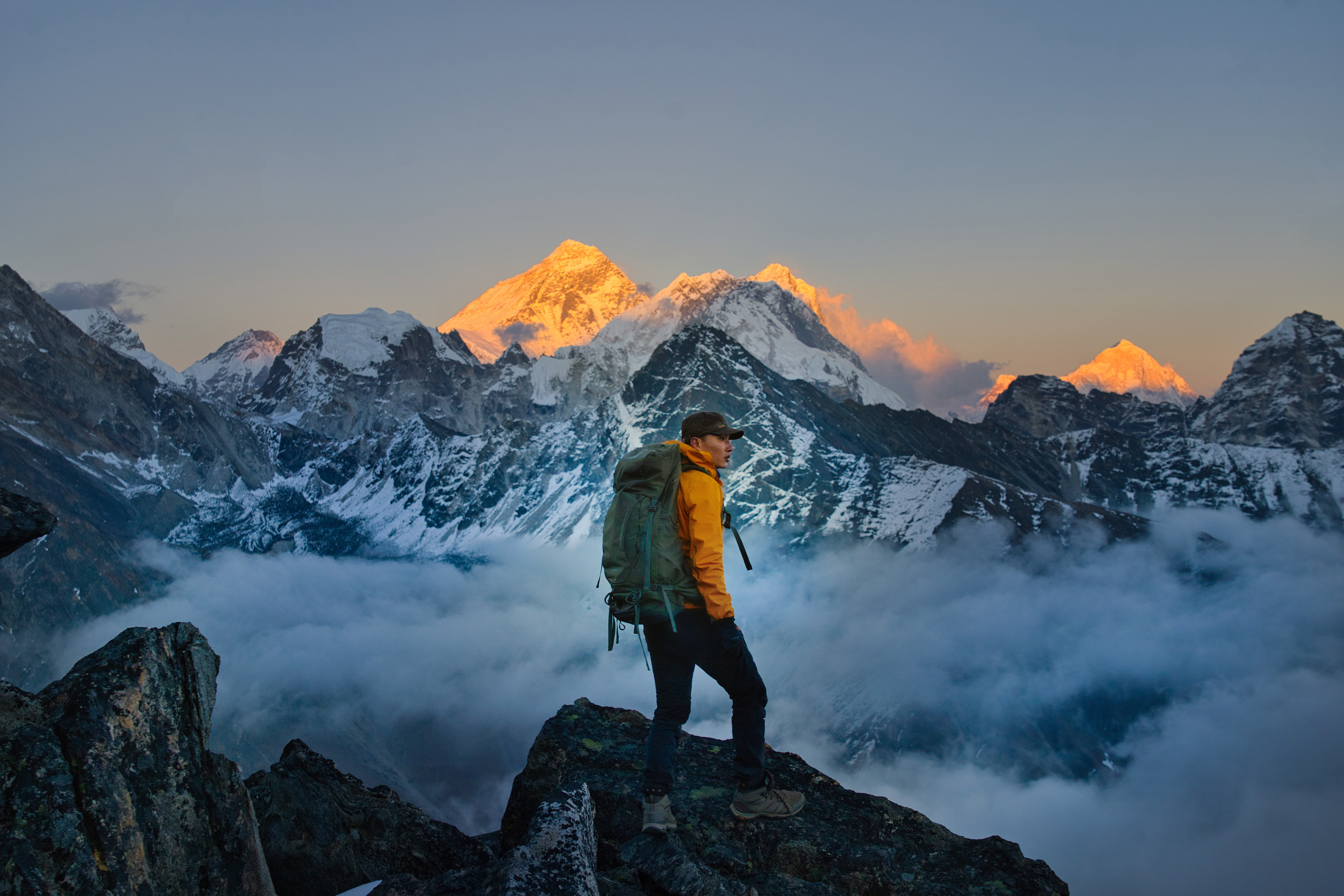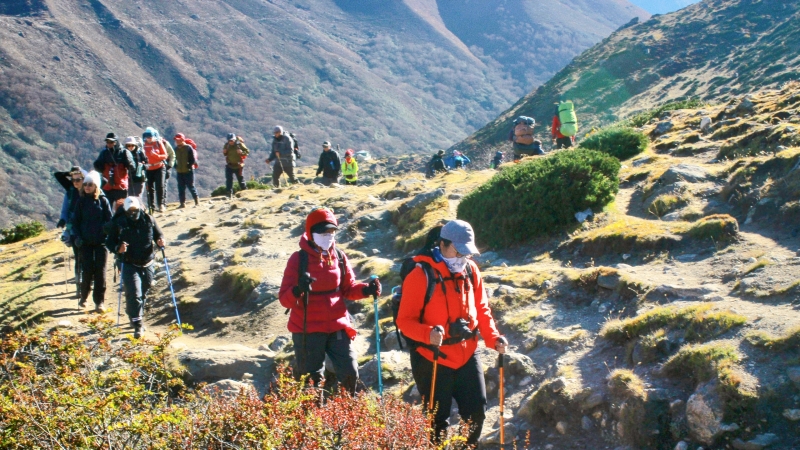Everest Three Passes Trek, crossing the three peaks of Kongma La, Cho La and Renjo La, is one of the most difficult journeys in Nepal with an altitude of over 5,000 m and rugged terrain. This route is not only a physical challenge but also a test of will and adaptability, where even experienced trekkers like Tran Trung Hieu – a mountaineering enthusiast from Hoi An, Quang Nam had to spend months preparing before departure.
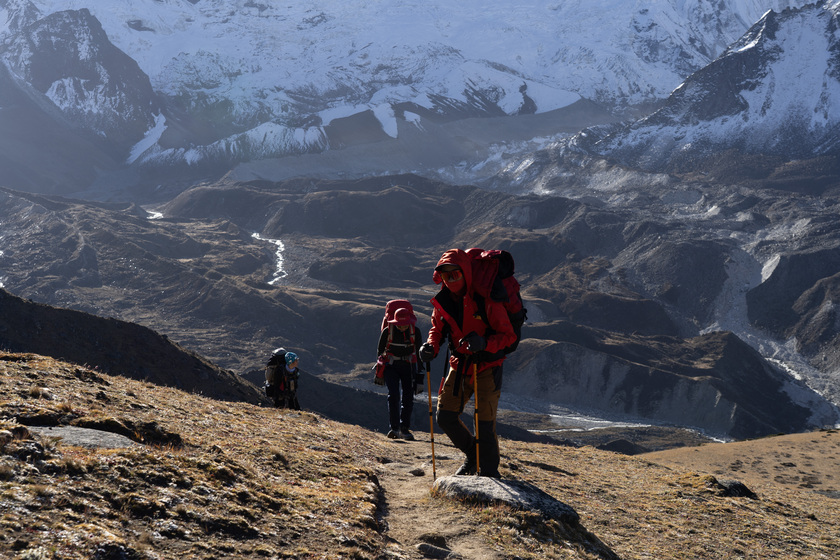
Everest Three Passes Trek - one of the most difficult treks in Nepal with altitude above 5,000 m and rugged terrain
Journey of a trekking enthusiast
For Trung Hieu, the passion for trekking does not stop at the mountains of Vietnam or the familiar treks of Nepal such as Langtang and Annapurna Circuit. He shared: “I have been to Nepal twice, but this time is special because Everest Three Passes Trek is a completely different challenge. This is a difficult and expensive route, so I waited until I had enough experience and physical strength to try it.”
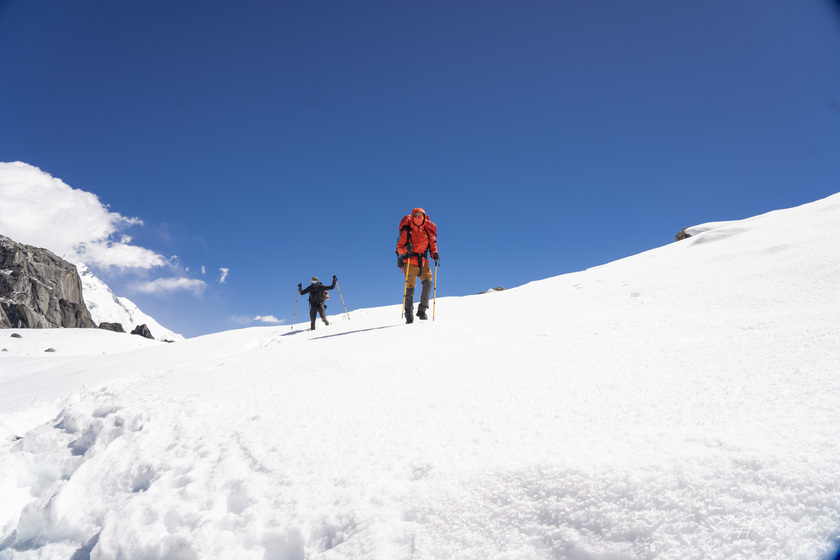


Difficulty moving in snow-covered and rugged terrain
Carrying a backpack weighing nearly 20kg, including a camera, sleeping bag and food, Hieu and his two friends decided to take the entire trip on their own, carrying their own belongings and relying only on the phone map. In particular, he believes that his group is one of the first Vietnamese teams to conquer this three-pass route on their own - a tough challenge that requires preparation and perseverance from each member.

Carry your own things and find your own way to conquer Everest
Kongma La Pass – The first and most difficult challenge
The three-pass route begins with Kongma La, the highest peak of the journey with an altitude of up to 5,530 m. Starting early in the morning, Hieu's group had to overcome ice blocks and steep slopes. "I have been through many passes here but have never seen a pass as difficult as Kongma La," he said.
During the long journey, the group only had time to stop briefly on the steep cliffs to catch their breath before continuing to climb higher. It took more than 13 hours, from 5am to 7pm, for the group to return to the motel in a state of exhaustion. Hieu recalled: “At that time, even though I was ravenously hungry, I still did not have enough strength to go down to the dining room and could only lie flat on the bed, and it took an hour to get up.”
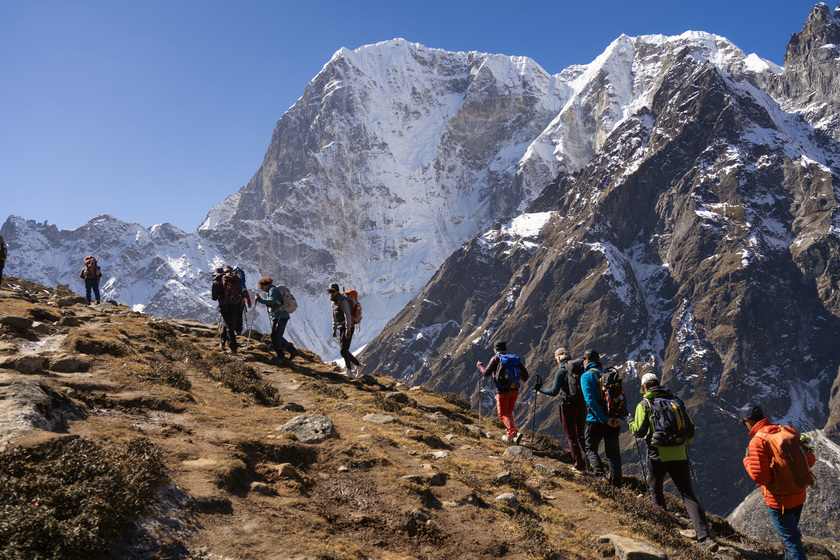
During the long journey, the group only had time to stop briefly on steep cliffs to catch their breath before continuing to climb higher.
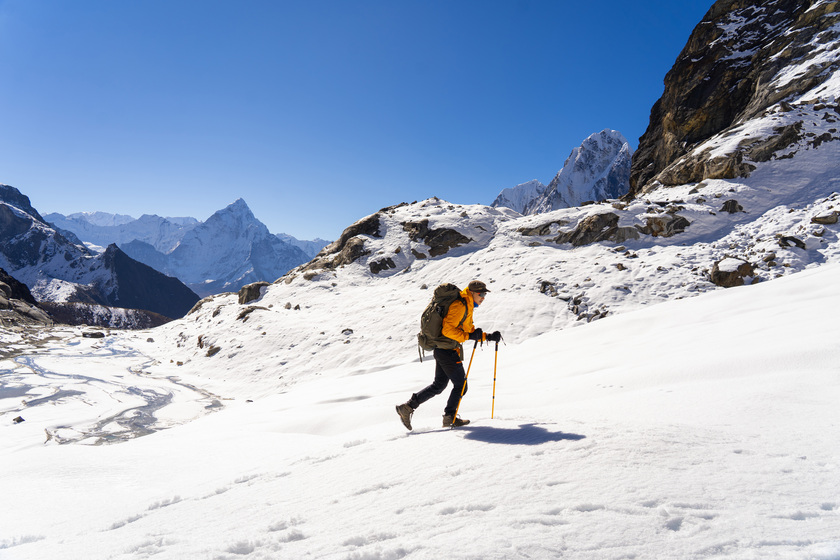
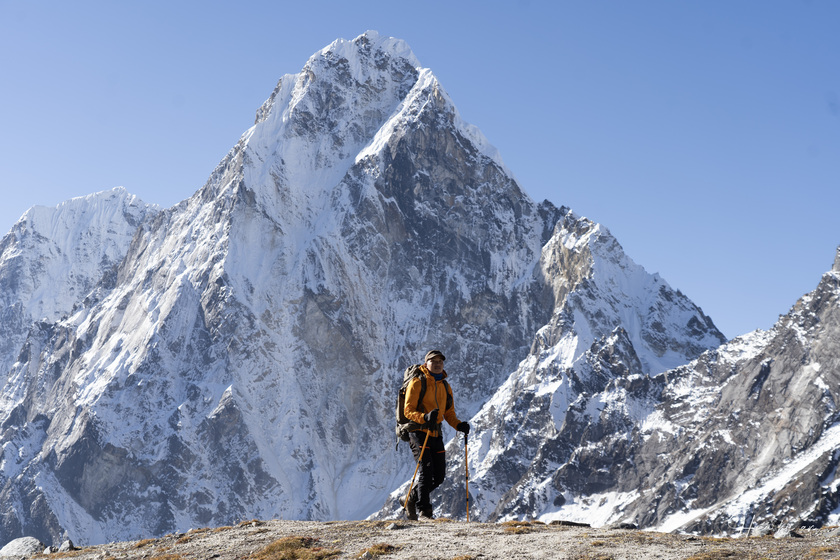
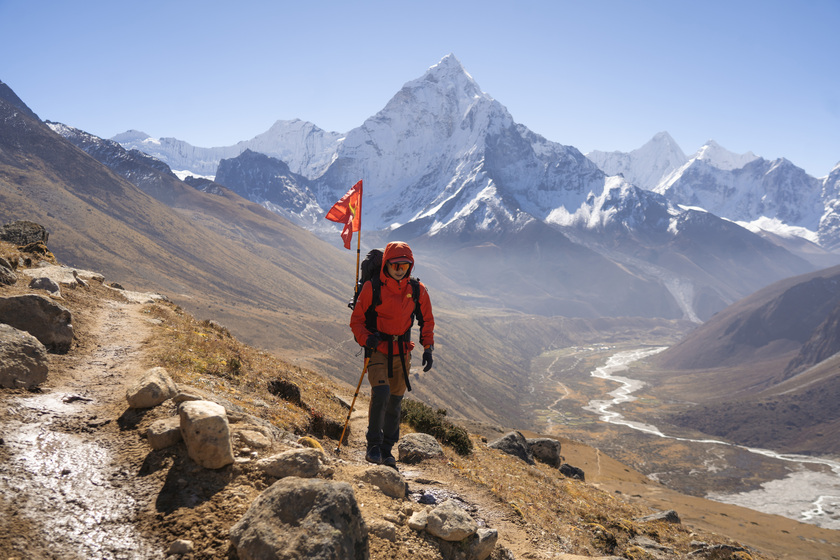
Due to subjectivity, Hieu and his teammates were exhausted due to lack of food.
The harshness of altitude and unexpected difficulties
Unlike other treks in Nepal, the road to these three passes has no rest houses or restaurants along the way. This put the group in a situation of food shortage after crossing Kongma La. “I was subjective in preparing food so I did not have enough energy and led to exhaustion,” Hieu shared.
Furthermore, altitude sickness became the group’s biggest challenge as they got closer to the summit. Hieu and his companions all suffered from severe headaches, dizziness, insomnia and had to quickly descend to adapt. “Altitude sickness depends on the body, not just physical strength. We had to take a whole day to rest and missed the chance to see the summit of Everest because we couldn’t bear it.”

The scenery along the way was like a dream.
In those dangerous moments, Hieu understood clearly that taking risks does not mean leaving it to fate. He shared: “This is a journey that I planned very carefully to know my limits. Risking my life just to see the scenery is not worth doing.” Hieu has experienced many adventurous mountain climbing trips, but he always finds ways to control the risks, which helps him to be confident but not subjective in every journey.
Lost in the paradise of Chukhung Ri and Gokyo Ri
Overcoming challenging routes, Everest Three Passes Trek brought Trung Hieu and his companions beautiful moments that are hard to compare with anywhere else. Especially, when standing on the top of Gokyo Ri, looking down at the clear blue Gokyo Lake and the longest glacier in Nepal, Ngozumba, he felt like he was lost in a completely different world. He expressed: “The sunset on Chukhung Ri and Gokyo Ri is really the highlight. When the last sunlight of the day shines on the lake and glacier, the scene appears like a dream. For me, this journey, although not finished, has become perfect after that moment.”

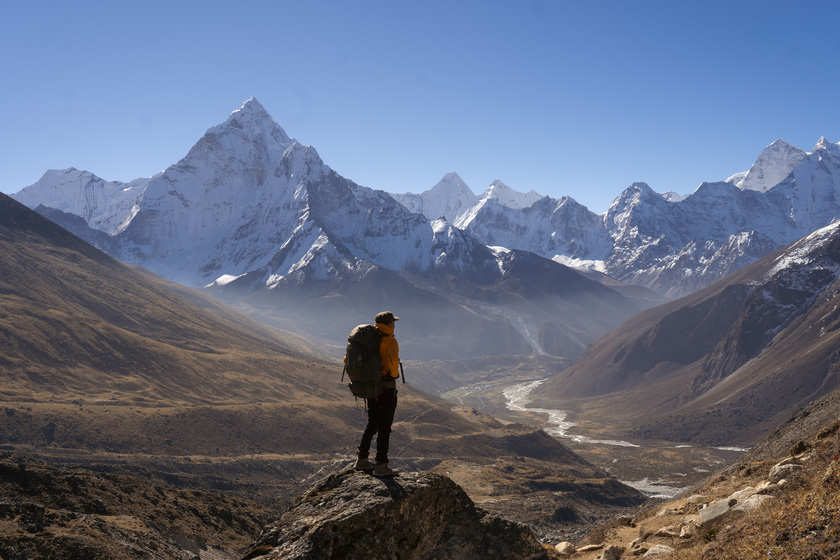
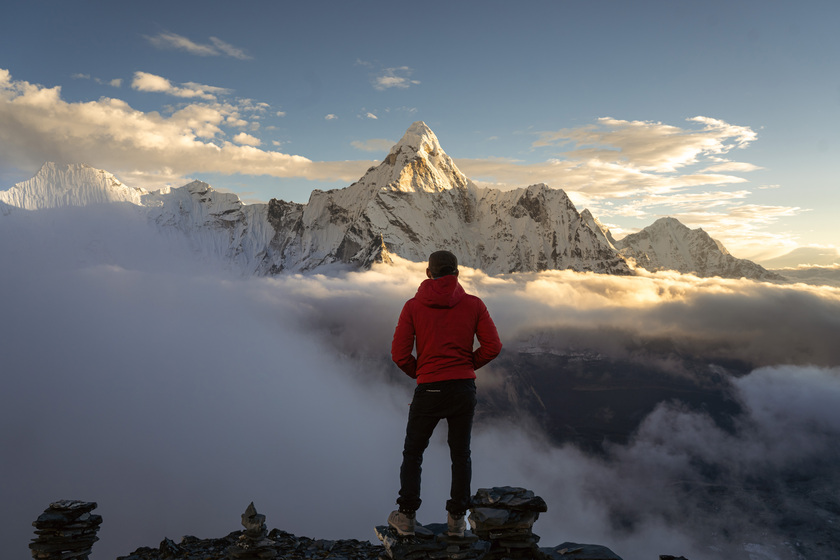
Rewards for brave hearts
Advice for those who want to conquer
Trekking in Everest is not only an adventure but also a battle with altitude and harsh weather. Trung Hieu advises those who want to participate in the three-pass route to carefully prepare their knowledge of terrain and physical strength. “This route requires endurance and experience. You have to walk 180 km continuously with a backpack weighing from 15 to 20 kg. Moreover, health is the deciding factor, because not only is the journey long but it is also a challenge of constant changes in altitude.” Hieu also emphasized that conquering Everest is not simply a mountain climbing experience, it can be seen as a journey to overcome one’s own limits.


Everest Three Passes Trek, with its blend of extreme challenges and majestic beauty, is a testament to the power of nature and human spirit.
Everest Three Passes Trek, with its combination of challenges and breathtaking beauty, is a testament to the power of nature and human spirit. This route is not for those looking for ease. But for enthusiasts like Hieu, this is a place to challenge yourself and find the true meaning of trekking.
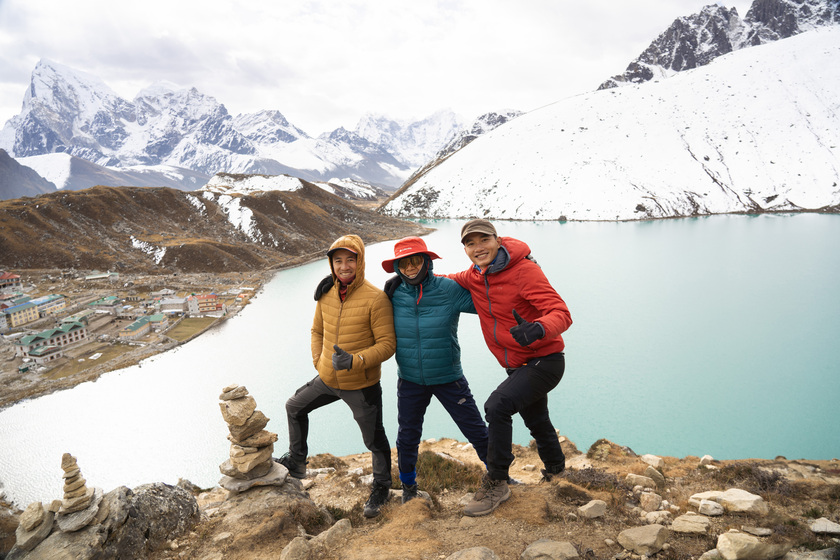
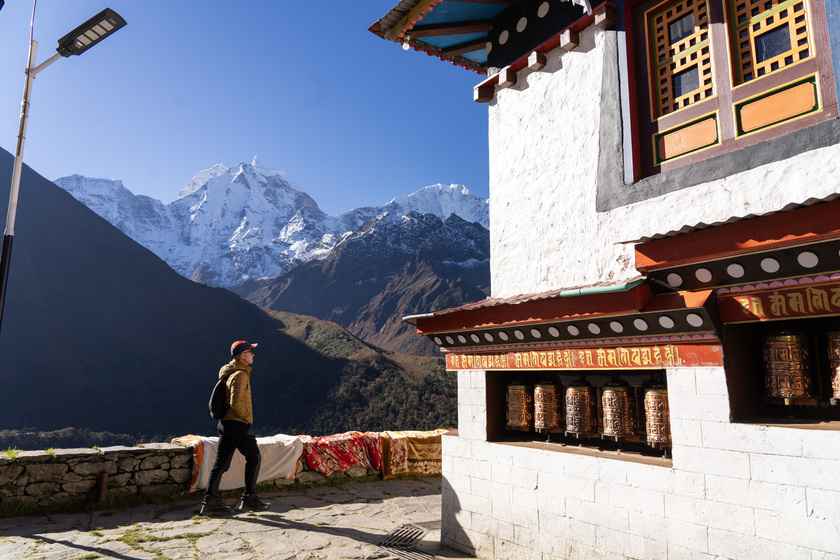

Go to conquer nature, and also to explore the limits of yourself.
“When I set foot on these peaks, I not only saw the beautiful scenery of the Himalayas but also felt my own limits. That was truly the most worthwhile reward after this journey,” he said, his eyes shining as if he still remembered every scene of the sacred land of Khumbu.






